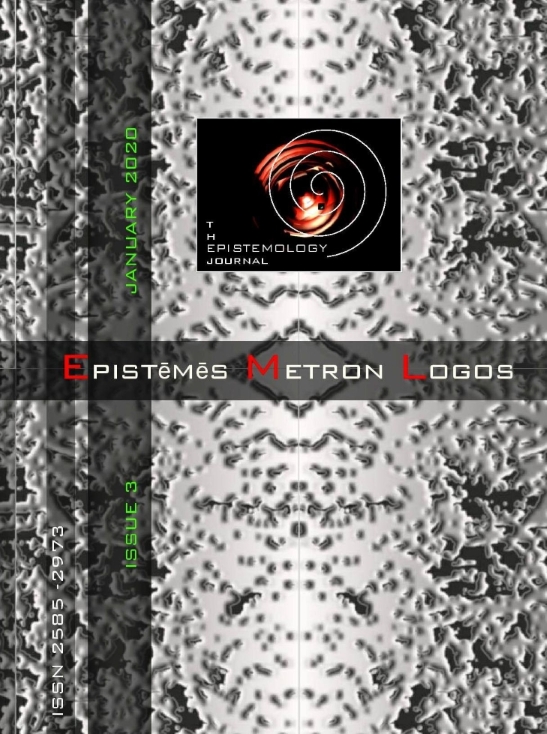Ο χορός ως αντικείμενο επιστημονικής έρευνας και φιλοσοφίας. Προλεγόμενα
Аннотация
τέχνη του χορού μελετάται σήμερα από τις επιστήμες και τη φιλοσοφία. Από την εποχή των αρχαίων Ελλήνων στοχαστών μέχρι τη σύγχρονη εποχή, ο χορός δεν έπαψε να θεωρείται τρόπος έκφρασης πολλαπλών δυνατοτήτων του πολιτισμού. Ο τρόπος που εκφράστηκε χορευτικά ο άνθρωπος στην ιστορία είναι και αποτύπωση σε κάθε εποχή της σχέσης του με τη φύση, το σύμπαν και τις κοινωνικές δομές.
Επιλέγοντας τις κυριότερες από το σύνολο των αναφορών στον χορό που μπορεί να συναντήσει σήμερα ο σύγχρονος αναγνώστης διαπιστώνουμε τον πλούτο και την πολυμέρεια των πληροφοριών και των προσεγγίσεων καθώς και τον διεπιστημονικό χαρακτήρα των μελετών. Ωστόσο, τόσο η ιστορική όσο και η φιλολογική, καθώς και η πιο πρόσφατη εθνολογική και ανθρωπολογική προσέγγιση δεν παύουν να παραμένουν σε ένα πληροφοριακό και εγκυκλοπαιδικού τύπου πεδίο, χωρίς να ολοκληρώνεται η θεωρητική εξήγηση και κατανόηση του φαινομένου, παρά μόνο εφ’ όσον τεθούν και απαντηθούν φιλοσοφικής υφής ερωτήματα. Αυτά τα τελευταία λοιπόν έχουν να κάνουν τόσο με την ταυτότητα της χορευτικής εμπειρίας- βάσει των δεδομένων της έρευνας των υπολοίπων μαθήσεων, τη σχέση του χορού με την γλώσσα, την επιστήμη ή τις επιστήμες (ιστορία, φιλολογία, φυσικές επιστήμες
μαθηματικά), τη μεταφυσική και την κοσμολογία, τη λειτουργικότητα κι εφαρμοσιμότητα των χρήσεων του χορού στην κοινωνία, τη θρησκεία και στην πολιτική. Ακόμα και το νόημα του χορού ή οι αισθητικές αρχές αλλά και οι ηθικές και παιδευτικές αξίες της χορευτικής δραστηριότητας των αρχαίων, εμπίπτουν σε παραδοσιακούς τομείς του φιλοσοφικού στοχασμού ή τουλάχιστον δεν συστηματοποιούνται επαρκώς στην κατεύθυνση μιας μεθοδικής έρευνας, παρά μόνο εάν υπαχθούν σε φιλοσοφική διερεύνηση.
Θα επικεντρωθούμε στα δεδομένα εκείνα που μπορούν να δείξουν ότι ο χορός και η όρχηση αντιμετωπίζεται από την φιλοσοφία ως μια ανθρωπολογική και συνάμα κοσμολογική έννοια που αναφέρεται στη σχέση του ανθρώπινου όντος τόσο με τον εσωτερικό ψυχισμό του όσο και με τον περιβάλλοντα κόσμο. Η «ευφυία» του αρχαίου ελληνικού χορευτικού πολιτισμού που ως φαινόμενο ξεδιπλώνεται σε πολλούς αιώνες, σε ποικίλα σχήματα και μουσικοποιητικά είδη, αλλά και με πλούσια κοινωνική, εκπαιδευτική και θεραπευτική λειτουργικότητα, δεν είναι άλλο από μια ακόμη ανακάλυψη των Ελλήνων από τις απαρχές της ιστορίας τους.
Article Details
- Как цитировать
-
Lazou, A. (2020). Ο χορός ως αντικείμενο επιστημονικής έρευνας και φιλοσοφίας. Προλεγόμενα. Epistēmēs Metron Logos, (3), 60–92. https://doi.org/10.12681/eml.22108
- Раздел
- Publishing partner

Это произведение доступно по лицензии Creative Commons «Attribution-NonCommercial» («Атрибуция — Некоммерческое использование») 4.0 Всемирная.
Authors who publish with this journal agree to the following terms:
Authors retain copyright and grant the journal right of first publication with the work simultaneously licensed under a Creative Commons Attribution Non-Commercial License that allows others to share the work with an acknowledgement of the work's authorship and initial publication in this journal.
Authors are able to enter into separate, additional contractual arrangements for the non-exclusive distribution of the journal's published version of the work (e.g. post it to an institutional repository or publish it in a book), with an acknowledgement of its initial publication in this journal.
Authors are permitted and encouraged to post their work online (preferably in institutional repositories or on their website) prior to and during the submission process, as it can lead to productive exchanges, as well as earlier and greater citation of published work.



